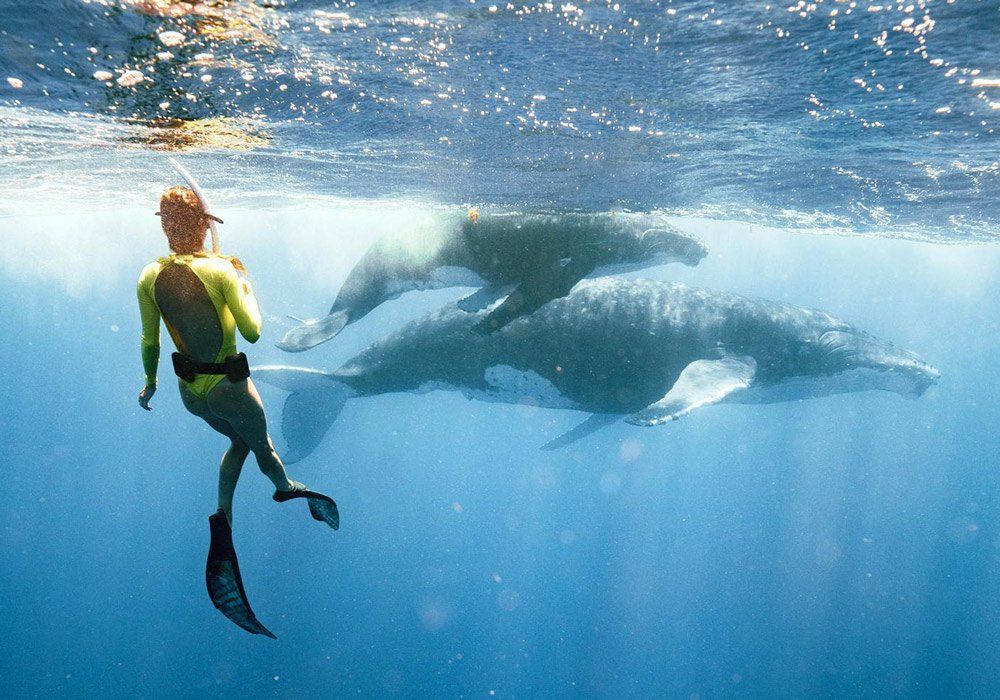10 Orca Facts
July 10, 2021
Facts you may not have known about Orcas
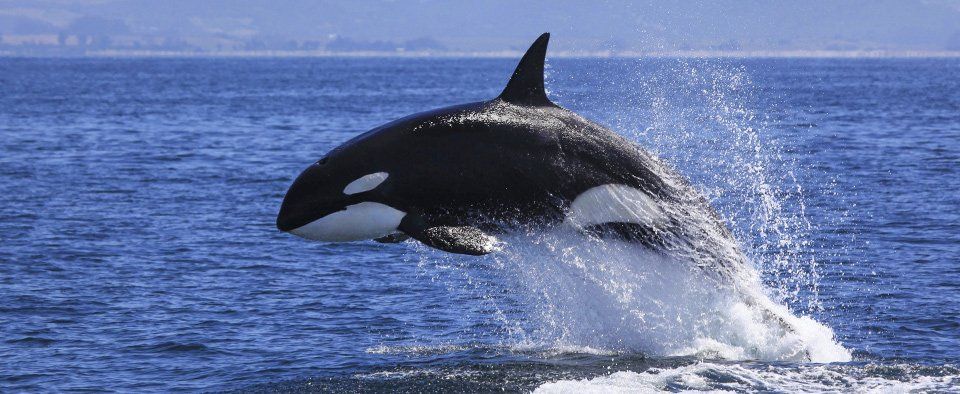
1. Size matters
Orcas, aka Killer Whales, are the largest of all the dolphin family, not the whale family as the name suggests. They can weigh up to six tonnes and grow to be around the length of a bus at 7-10m long. Orcas have 40 to 50 teeth that are approx 7.6cm long. There are many different species of Orcas including Offshore, Transient and Resident and they all vary in size depending on the which prey they eat.
2. It’s all in the name
The name killer whale comes from their original name 'whale killers' given to them by sailors who saw them hunting other whales. The name orcas “asesina ballenas”, or 'whale killer' was eventually flipped around to the easier 'killer whale'.
3. Orcas can be found in every ocean on the earth
Orcas inhabit all oceans of the world. They are the most widely distributed mammal second only to humans and possibly the brown rat!
They are mostly found in the colder water like the Pacific Northwest, Northern Norway in the Atlantic and also in the higher parts of the Southern Ocean. Orcas have also been found in temperate waters such as South Africa and New Zealand while being observed in warm water areas like Australia, Hawaii, Bahamas, The Galapagos and even the Gulf of Mexico.
4. Orcas are mammals that have evolved based on culture and are the only ones! (besides humans that is)
Orcas have developed complex defined cultures based on behaviours that they have learnt. Scientists have found that the Orcas culture has shaped how they eat, how they hunt, how they have fun and who they chose to mate with. It was believed that only humans have this ability and so this new understanding has been significant in orca studies. Orcas also have excellent communicative skills using distinctive calls and whistles. In the wild they live 60 years or more, and they stay in tight knit matrilineal groups. Orca family units are led by a matriarch and she will be instrumental in teaching specific behaviours to her offspring.
5. Orcas go through menopause!
Three species experience menopause. They are humans, short finned pilot whales and orcas. Orca females stop reproducing around 40 and can live to 90, whereas males tend to live around 50-60 years.
What reason do females orcas give up the critically important process of reproduction in middle age just like nearly every other animal in the kingdom?
Theory one
“the granny effect”: It was said that its possible older females experience so that they are able to devote themselves to both the rearing of children and teaching the generations important life skills. This means that grandma orcas can still pass on their genes and genetic legacy as they are able to focus their attention on the survival of their families rather than on birthing more offspring.
Theory two
(and said to be a more accurate hypothesis) Middle aged Orca Mums approaching menopause were observed. It became evident that mother whales suffer much higher costs when competing to reproduce with their offspring once they become young mothers. When older mothers did have offspring, the offspring were 1.7 times more likely to die than those of younger mum Orcas.
It can now be assumed that older female Orcas at the age of around 40 experience menopause as they are in direct competition over resources with their own daughters!
6. Most males never leave their mothers
Using 36 years of data on Orcas in the Pacific Northwest, the researchers found that for males over 3, the death of a mother meant an eightfold increase in the likelihood of death within a year. Orcas stick with their mothers their entire lives. Dr. Foster suspects that mothers help sons with foraging or offer protection in encounters with other males. Among female orcas over 30, there was only about a threefold increase in the likelihood of death in the year after a mother’s death. “It makes more sense for the mothers to invest more in their sons, because there is no increased burden on the family group,” Dr. Foster said. “Children of sons move on to new family groups.”
7. Orcas have the 2nd heaviest brain among marine mammals
Orca’s brains come in a close second to the brain of a sperm whale. Weighing on average 7.8kg, they have amazing well wired and complex brains. The size of their brain has evolved so that they can navigate the underwater world they live in by using sound and also be able to successfully communicate with each other.
8. Female Orcas gives birth to 1 calf every five years, and averages 5 calves a lifetime
Female Orcas have a gestation period of between 15 and 18 months and give birth every three to ten years. Most calves are born in winter and nurse for up to two years. Calves are born with a floppy dorsal fin and tail and are black and peachy-orange in colour, they're not born black and white. As they gradually grow adding more blubber to their bodies, their colour changes to the distinct black and white that we associate orcas with. Newborn calves weigh 136 to 181 kg and can weigh up to half a tonne and reach over 3m at 6months of age.
9. Orcas cannot smell
It’s believed that Orcas are unable to smell due to the fact they don’t have smelling organs or a lobe of the brain that is dedicated to smell. They spend so much time underwater that they have very little use for this sense. They do however have excellent hearing and excellent sight.
Orcas are able to use their excellent sense of hearing to practice echolocation. They use echolocation to distinguish where objects and animals are in relation to them. For example, echolocation is used to help orcas locate prey when hunting and also to navigate their way around in the dark or murky waters. Orcas produce sounds like squeals and clicks and then listen to the echoes.
10. They can sleep with one eye open
Orcas don’t really ever sleep -well not like humans do anyway. Orcas sleep or rest while still keeping an awareness of what is around them. If the left eye is closed, their right brain will remain active and vice versa. All dolphins will have this ability as they need to go to the surface continually to breathe, they also need to be somewhat aware should any predators be near and so they sleep using only half of their brain.
If you would like to know more about the life of Orcas, or even have the opportunity to snorkel with these beautiful mammals in Norway please get in contact with us!
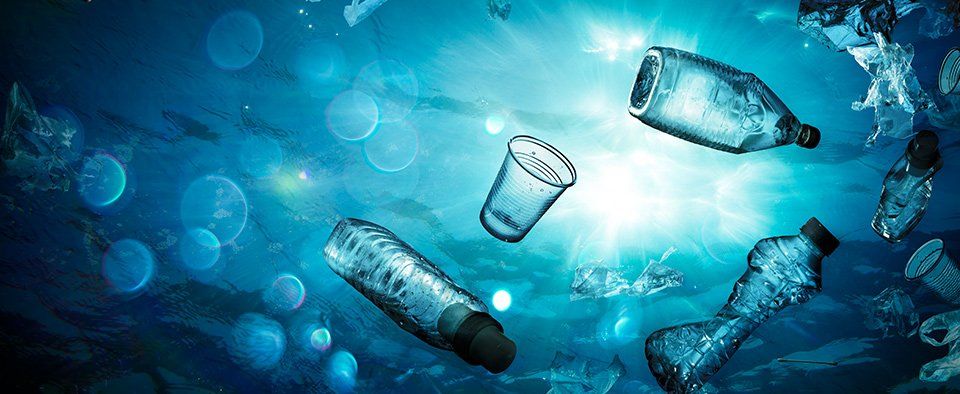
1. Plastic Ocean Globally over 100,000 whales, dolphins, seals, porpoises and Sirenia die annually as a result of plastic in our oceans. Whales and dolphins can easily ingest plastic. This can be directly through mistaken identity for prey or through the prey that they eat who have ingested the plastic previously. A sperm whale was stranded in Indonesia and its necropsy revealed that it had ingested over 13 pounds of plastic, including bags and thongs. https://www.nationalgeographic.com/environment/2018/11/dead-sperm-whale-filled-with-plastic-trash-indonesia/ Over 60% of beached whales found been found to have both plastics and micro-plastics inside them meaning over half of the population is at risk form plastic pollutants. The ingested plastic causes major problems, disrupting their reproductive and developmental processes. This also making them unable to fight off diseases and illnesses. The toxins absorbed are almost impossible for the animal to metabolise. Micro plastics (pieces smaller than 5mm) have also become a major threat to marine life particularly the baleen whales who take huge gulps of seawater during filter feeding. Items found to be the most deadly to marine life include: Plastic bags Balloons Ropes Rubber Fishing debris Small things we can all do to help: Avoid single use plastics where possible Regular beach clean ups in your community Education Reuse, recycle and Reduce the use of chemicals and products containing micro-beads. 2. Noise Ocean noise can include ship traffic, sonar and now seismic testing (air gun blasts for gas and oil exploration). These noises can disrupt whales migration, breeding, communication and navigation. They can also be very physically harmful to whales impairing their hearing, brain haemorrhaging and the drowning out of communication sounds important for survival. In some circumstances ocean noise can result in death. Seismic Testing involves blasting the seafloor with high-powered airguns every 10 seconds and measuring the echoes with long tubes to map offshore oil and gas reserves. These blasts disturb, injure and kill marine wildlife around the clock for years on end. The deafening sound is between 200 and 240 decibels and can travel for around 3000km at a low frequency affecting mostly the larger species of marine mammals such as the great whales because of the lower frequency. Shipping Noise happens with increased shipping. Increased ocean noise presents obstacles for whales on migrations and within feeding grounds. Whales rely on their hearing and sonar to find and hunt food. Sound travels more than 4 times faster in water than in air. Ships produce noise at approximately 175 decibels and this noise often overlaps with the whales frequencies which in turn greatly affects their ability to navigate, reproduce and feed. Whales also experience high levels of stress which can be detrimental in many ways. Sonar: low-rolling sound waves topping out at around 235 decibels; the world’s loudest rock bands top out at only 130. These sound waves can travel for hundreds of miles under water and can retain an intensity of 140 decibels as far as 300 miles from their source. Submarine sonar exercises have been linked to several high-profile mass strandings. There have been at least 12 beaked whale mass stranding events (involving two or more individuals) that coincided with naval exercises. Research has shown that Beaked whales cease vocalising and foraging for food in the area where mid frequency sonar is being used. Beaked whales are deep diving animals who dive to the bottom of the ocean to feed. Sadly when exposed to sonar the beaked whale becomes stressed and tries to swim away from the sound too quickly towards the surface causing the whale to effectively have ‘the bends’ otherwise known as decompression sickness. The bends occurs when nitrogen bubbles get into the bloodstream often causing haemorrhaging and damage to vital organs.

Today we will be interviewing the very ambitious, adventurous and talented Laura Jourdan. Growing up in France, Laura always dreamed of beautiful, snow filled mountains and chilly climates. S he spent her days day dreaming about the many animal filled adventures that she would one day have! And now after chasing her dreams and never giving up, Laura is living the life many of us only dream of. Travelling to far away arctic destinations and becoming a tour guide in the polar regions, she immerses herself in the many wildlife wonders that the arctic offers and has never once looked back! Even the halt of international travel due to covid has not stopped her adventurous spirit as she has found a new direction - training to become an astronaut! We are so impressed Laura! We love this little french fire cracker and we know you will too.......enjoy! What inspired you to do what you do? As a child my imaginary world was turned towards nature and adventure, spending my time healing the trees or exploring forbidden corners at the playground or reading adventure and animal photography books at home. My love for nature made me study biology but being stuck in a laboratory or a classroom between four walls was not really my cup of tea. I caught the Arctic bug when I travelled to Svalbard in 2016 and did not stop exploring the polar regions since then, falling each time more in love with the ocean, the sea ice, the icebergs and the animals that inhabit these remote regions. That is how I ended up being a polar guide on expedition ships, an achievement that I am very proud of. What is your must pack item/s when travelling? My camera, my binoculars (otherwise there is no animal to photograph) and A LOT of wool. Wool socks, wool gloves, wool shoes, wool underwear… When you spend your entire days with your feet in the snow, wool quickly becomes your best friend! With all your travelling, how do you contribute to protecting the environment /flora and fauna? I try to share my passion for the polar regions with my passengers as much as I can, by explaining them how the ice is formed, how the animals live, why do they migrate, what do they eat, how do they hunt, what is their life cycle… so that they become aware of how sensitive they are to the disturbances caused by human beings (fishing, hunting, pollution, climate change, etc.) I try not to push because people are on holiday so my main aim is that they have a good time, but I hope that my explanations make them better understand the world that surrounds them and make them want to take care of it and maybe even to become ambassadors of its protection :) What’s next in store for you? Haha that is a big (and uncertain) question! The covid crisis has got me stuck at home for more than a year now. In the first months I was looking back at my photos and living again my memories, thinking that I was so lucky to have done all I have already done in my life, but one year is long and being stuck between four walls is still not my cup of tea. Last February, I heard that the European Space Agency is currently recruiting its next generation of astronauts and the kind of profile they are looking for looks similar to mine, so I put myself into the challenge to apply! The only problem is that there is no animal in space… maybe I should start a farm on the International Space Station! OK, now it’s time for the good the bad and the insane question: What is one of your Good experiences you can share with us? Here I have to talk about this amazing opportunity I had to get into the water with the orcas in Norway! I was working as a whale safari guide on board a boat which was bringing tourists from all over the world to a very special fjord area where orcas and humpback whales come in the winter to feed on herring. Watching the feast every day from the deck made me want to see them closer. I am grateful that Carmen and Sarah offered me the opportunity to jump into the water! It was my first time immersed with such big animals in their environment and the experience was amazing. For sure it left a memory that hasn't left me since then. From that day on, I saved money to buy an underwater housing and the two next winters I went back into the water again to photograph these beautiful animals under the surface. Thanks for the plug Laura! What is one of your Bad experiences you can share with us? One day at work on Svalbard, I was on polar bear duty and of course that day we had to land on a site with a lot of fog and a lot of hills behind which polar bears could hide. My expedition leader asked my colleague and I to scout in two different directions because the site was quite wide and I quickly ended up on my own, feeling like I could be an ideal food for predators. While I was carefully moving forward, my bag on the ground and my rifle on the shoulder, I heard on the radio “Polar bear in the area, please retreat to the landing site”. First I thought that it was a joke but the message was repeated several times. My blood froze and I understood that I had put myself in a very sticky situation. No one could hear me on the radio because I was behind a hill and I prayed for my team not to forget me here. I walked back to the landing site completely terrified about the idea that a bear could appear from anywhere and take me as a dinner target but I finally reached the edge of the water safely, just on time before the last zodiac left the beach. That was a frightening experience and this polar bear came to visit me in several nightmares, but that day also taught me to always assess the conditions myself before accepting any polar bear guard mission! What is one of your most insane experiences you can share with us? I think that calving icebergs and glaciers are always insane to watch. They are so gigantic and yet so fragile. I remember one day while we were coming back from a zodiac cruise, I had just disembarked my passengers on the main ship and I was waiting to recover my zodiac when a huge wall of ice fell from a glacier front into the water. We initially thought that this part of the glacier was inactive so we had parked the ship just in front of it to launch the operations so the wave and pieces of ice which came after the calving made the ship move quite a lot. It was definitely insane to watch! Oh and whales are insane too, of course. One can watch a whale a thousand times and still shout “Wooooow” when it pops up again. And the final fun question (and don't be shy with this one): What's your most disgusting habit ? Haha, I would say all the things linked with peeing when you are a female diver using a dry suit ! Any technique is disgusting. From wearing baby diapers – the sexiest underwear ever; to using an external pipe and pee while standing like a man behind the boat - and wetting the rubber of the inflatable boat because you didn´t pee fast enough or wetting yourself because you didn´t place the pipe correctly; to using a “she-P” which consists in sticking a pipe directly on yourself with medical adhesive and keeping your butt cheeks stuck with the remaining medical adhesive several days after you removed the system. A whole mood! And now I know what a She-Pee is! Thanks so much Laura, I cant wait to hear what's in store for you next in your non-terrestrial life.
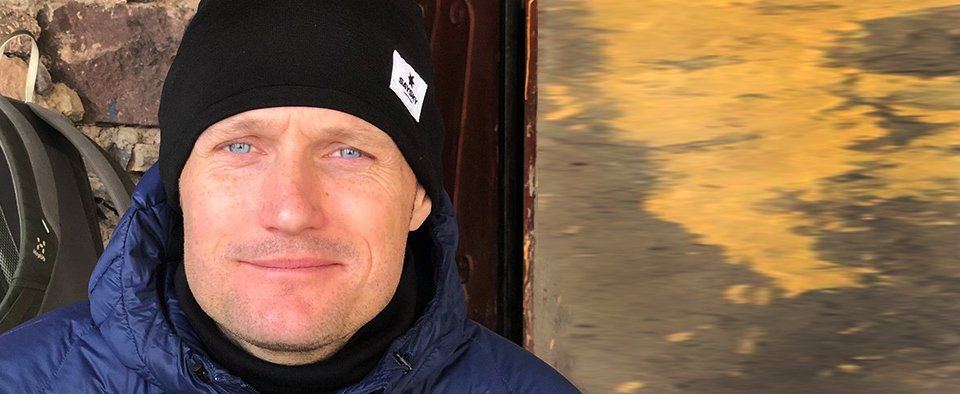
Today we will be interviewing the very charismatic, adventurous and ambitious Co Founder of King Fish- Mads Odgaard. Mads owns and operates the largest and most established dive/free dive /travel company in all of Scandinavia. Having lived all over the world and experienced many cultures such as New Zealand, India and Africa, Mads now resides in Denmark with his wife and two gorgeous little girls. His passion for dive and travel have taken him all over the world and with a big love for all large aquatic animals and underwater photography, Mad's role in the company is as Trip and Expedition Leader and the operator of Kingfish Orca Swim Live aboard. Majestic is lucky enough to partner with Mads and Kingfish with our Orca Swim and Northern Lights tours to Norway! What inspired you to do what you do? Right from early childhood I was always a massive fan of large aquatic animals. After my first dive certificate in 1998 and shark diving with large bull sharks in South Africa same year, the passion was unleashed. I quit engineering studies and never looked back. What is your must pack item/s when travelling? Mmm..difficult one if it’s besides a passport and credit card. When tropic, it’s a cap for my hairless head I think.. :) when arctic it’s got to be my arctic free dive suit. With all your travelling how do you contribute to protecting the environment /flora and fauna? I choose eco-conscious operators to visit. In my hometown of Copenhagen, two cargo bikes are our everyday means of transportation between kindergarten, work and home, averaging 20km/day with 2 kids in the front. As a company, I also donate to the worldwide nature conservation organisations Oceana and WWF. What’s next in store for you? I was meant to be in Brazil to dive with Anacondas in 2020 and working to reschedule that trip. Can hardly wait for the Orca season to start again in late October – it’s just my favourite! Until then, my plans are to be in South Africa for the Sardine Run and Galapagos for pregnant whale shark season. Ok now it’s time for the good the bad and the insane question: What is one of your Good experiences you can share with us? One of my very best experiences was diving free with great whites. Something I had been wanting to do since my first cage dives in the 90’s. Planned the trip for several years before I could make it happen. When it finally did, I was lucky enough to swim eye to eye with a beautiful shark and there was a moment of pure magic that will always be special to me. Did you know great whites have beautiful blue eyes full of life? What is one of your Bad experiences you can share with us? Once in the Philippines I hit a crown of thorns and got around 35 poisonous spikes logged into my knee. It was really very painful and I couldn’t walk for around 6 weeks. What is one of your most insane experiences you can share with us? Back in 2007, I had a kiss from a large tiger shark on my thigh. It was on a shark dive where we had 7 tigers and many other large sharks around us, and one of the sharks snuck up on me from behind in midwater. I managed to push it away, so nothing serious really happened, but one tooth did go through my wetsuit and cut my thigh app. 10cm long and 3cm deep. Even though this sounds crazy to most people, I did not experience this as a shark attack but more like a man-shark encounter in the ocean. The whole thing just emphasised to me that sharks are very misunderstood animals and not the mindless killers they are still made out to be in the media. And the final fun question (and don't be shy with this one): What's your most disgusting habit? I’m a sucker for raw herring which is a national dish.. especially taken with lots of schnapps 😉
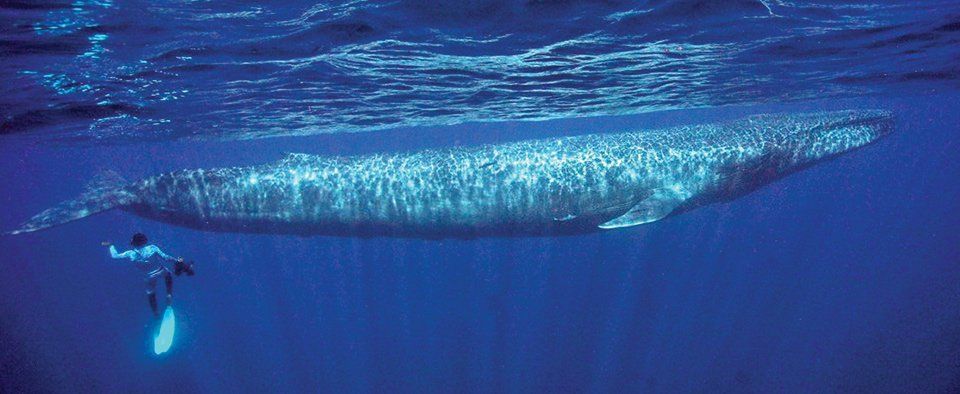
What is it about the blue whale that we find so very intriguing? Is it the fact that they are the largest animals ever known to have lived on earth? Even bigger than megalodon who scientists say grew to 60 feet long. Blue whales can grow up to 100 feet long – the length of a boeing 747! It could be that blue whales can weigh over 200 tonnes (which would equate to 30 elephants). Or could it be the fact that a blue whale’s tongue weighs 8000 pounds or the weight of two medium sized cars? Their heart beat can be detected from 2 miles away and it weighs roughly 1300 pounds. You could fit 5 or 6 adults quite comfortably inside the space of the heart chambers. Blue whales’ arteries are so big in fact, that a full-size human could swim through them, or so it’s said. For those who are intrigued by something a little on the gross side you, may like to know that a blue whale poos 200 litres a day. It is bright orange in colour ewwwww, which is thanks to their diet of krill and its consistency like bread crumbs. The smell? Well that’s said to be as stinky as a dogs poo! The farts of a Blue Whale can smell really bad, this is due to the breakdown of their krill diet. When a whale farts under water the sound can be almost non-existent, making the flatulence ‘silent but deadly.’ In some cases bubbles can be seen rising to the surface some big enough to fit a large horse inside! To go one step up from farts, i’m sure you are already aware that male blue whales have the biggest appendage in the world (both animal and human!) A blue whale’s willy is 12 inches in diameter and a whopping 10 feet in length! When retracted it curves up in an S shaped loop inside the body. By comparison, an adult African elephants’ appendage can grow up to 1.8m on average. Blue whales are also some of the loudest animals ever to have lived. Up to 188 decibels which is louder than a jet plane. Luckily the human ear can’t pick up the sound underwater or our eardrums would be blown to smithereens. You may ask the question, why are blue whales bigger than any other animal? There are a few answers to this but to simplify here’s a couple of key reasons. Back in the days of the ice age of uncertain climate and declining food supplies, the bigger the whale became, the more fat they could store. Their large bodies allowed them to migrate more efficiently to search for the best feeding grounds. A technique of lunge feeding and capturing their food source emerged allowing blue whales to gather enormous amounts of food, approximately 4 tonnes of krill each day. The blue whales have become specialised feeders transforming them to the largest animals ever to have lived. Personally, I love the fact that whales are emotional and loving animals. In a new study of the brain, scientists have come across a cell that was originally thought to have only lived in humans and apes – the “Spindle Cell.” This cell allows humans to experience love and emotions. This discovery means not only that whales also have these distinguishing spindle cells but that whales were also the first to have them, well before the apes did. The large whales have been evolving these cells for over 30 million years which is twice as long as humans. Interestingly the cells were also found in the same area of the brain regulates emotional functions. These emotions include social organisation, empathy, speech and intuition… amazing! In closing, there are many reasons why the majestic blue whale is one of the most intriguing animals ever known to man. I have named just a few cool points here and I’d love to hear your own thoughts on this topic. Please leave a comment below…nerdy, funny or gross!
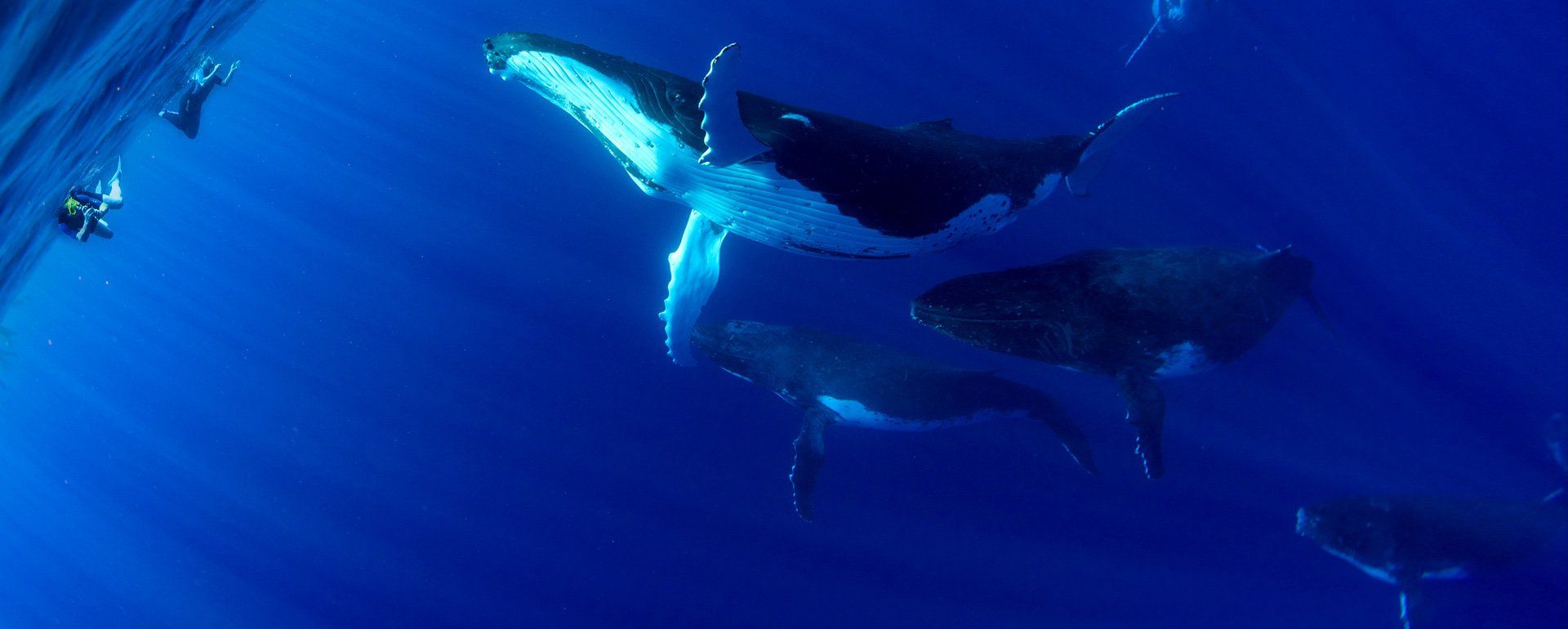
Majestic Whale Encounters was founded in 2013 by two sisters Carmen and Sarah who have always had a passion for travel, the environment, the ocean and particularly the large marine life that lives within it. They turned that passion into their livelihood and are now Australia’s largest Whale Swimming Company. Taking guests to beautiful destinations around the world such as Tonga, Tahiti, Norway and The Bahamas for life changing experiences of swimming with humpback whales, dolphins and orcas. Swimming with whales can be a life changing experience for many people. The surreal feeling guests have when under water with these gentle ocean giants is something that can only be described as pure exhilaration and joy. In small groups guests quietly enter the water with the whales from the boat and wait for the whales to come and interact, the whales can be extremely curious and cheeky. Majestic operate all their tours with total respect for the whales and all encounters are made on the whale’s terms. Over the years that Majestic have been operating, the whales have come to know them quite well and the interactions experienced are truly amazing and can also be quite humbling. All tours are inclusive packaged tours, so that guests have a relaxing, stress free holiday from the moment they arrive in their selected country. Most tours have a maximum group size of 8-12 guests, plus a personal guide making each tour a great way to get up close and personal with the whales. It also means maximum interaction with minimal impact on the whales and the environment. This is also a fantastic way to meet like-minded travellers that become friends for life. Priding themselves on a high level of customer service, the team at Majestic Whale Encounters are there every step of the way. From the moment of first contact, to during and even after the tour they are always there to offer their services. Majestic Whale Encounters are also immensely proud to be able to use Majestic as a platform to be able to give back to the many countries that host them and their groups. They have developed a pay it forward initiative from reef rehabilitation and environmental education to donating directly to the villages in need.

